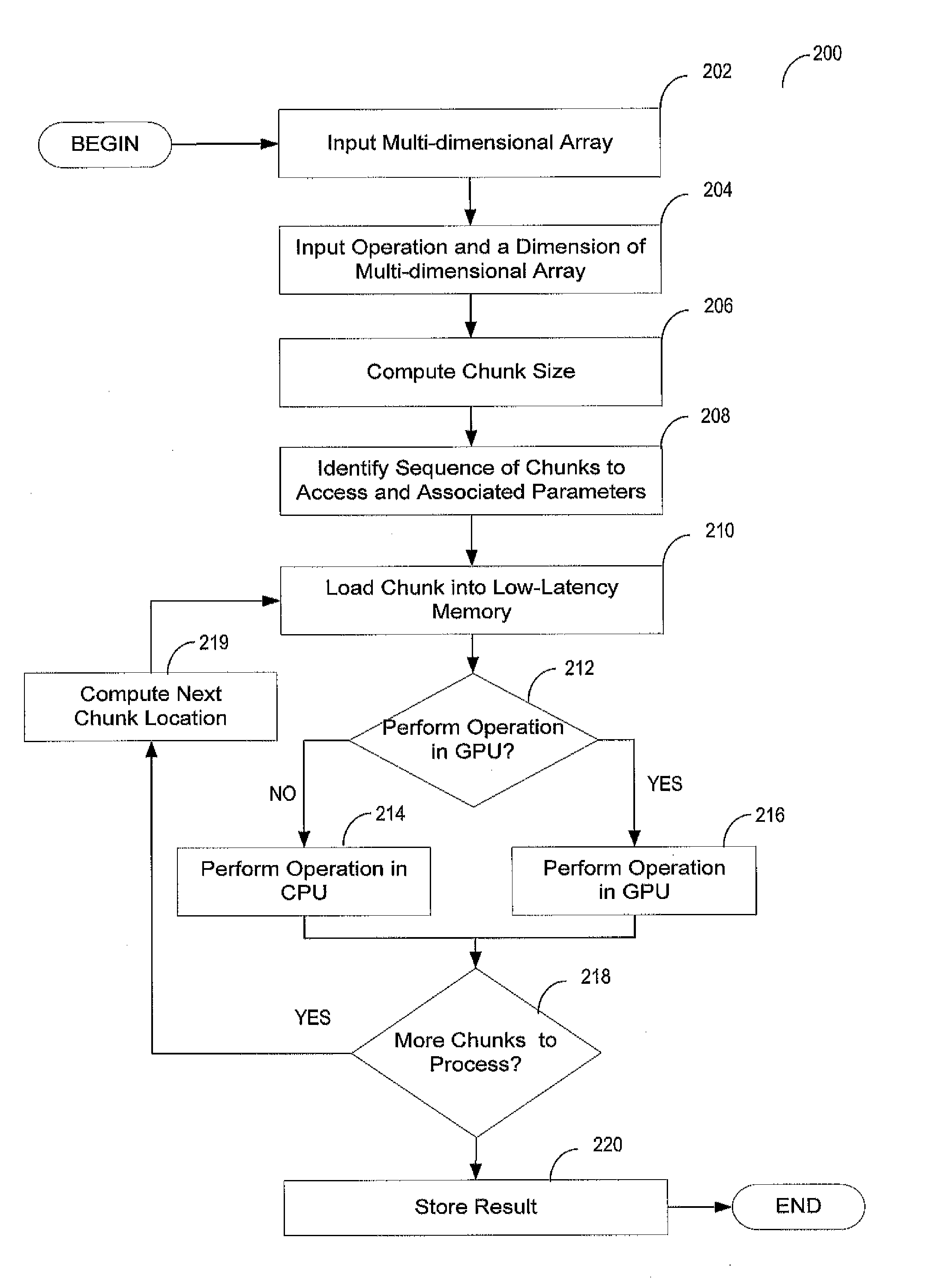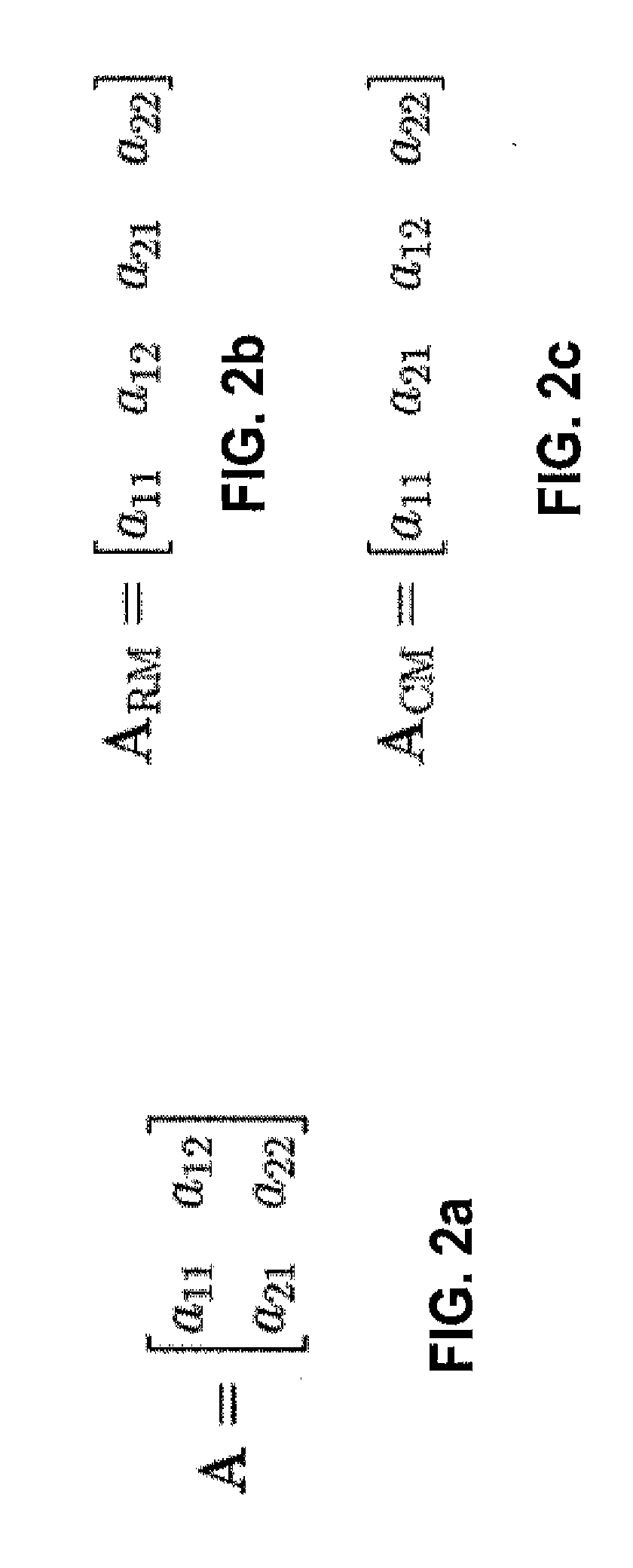Multi-dimensional array manipulation
a multi-dimensional array and array technology, applied in the field of multi-dimensional array manipulation, can solve the problems of multiple access to high-latency memory, time-consuming each memory access, and inability to meet the requirements of many applications, so as to improve the operation of a computing system that manipulates large multi-dimensional arrays
- Summary
- Abstract
- Description
- Claims
- Application Information
AI Technical Summary
Benefits of technology
Problems solved by technology
Method used
Image
Examples
Embodiment Construction
[0027]The inventors have recognized and appreciated the need for a memory-efficient approach to iterating over multi-dimensional arrays, stored either in row-major or in column-major order, that reduces a potentially large number of high-latency memory accesses. The inventors have further appreciated that, when multi-dimensional arrays are stored linearly in memory, iterating over all but one of the dimensions of each multi-dimensional array requires large strides across memory locations at each iteration, potentially leading to multiple accesses of high-latency memory. For instance if a multi-dimensional array is stored in column-major order, iterating over any dimension other than the first dimension may require large strides across memory locations at each iteration. Similarly, if a multi-dimensional array is stored in row-major order, iterating over any dimension other than the last dimension may require large strides across memory locations at each iteration.
[0028]The inventors...
PUM
 Login to View More
Login to View More Abstract
Description
Claims
Application Information
 Login to View More
Login to View More - R&D
- Intellectual Property
- Life Sciences
- Materials
- Tech Scout
- Unparalleled Data Quality
- Higher Quality Content
- 60% Fewer Hallucinations
Browse by: Latest US Patents, China's latest patents, Technical Efficacy Thesaurus, Application Domain, Technology Topic, Popular Technical Reports.
© 2025 PatSnap. All rights reserved.Legal|Privacy policy|Modern Slavery Act Transparency Statement|Sitemap|About US| Contact US: help@patsnap.com



